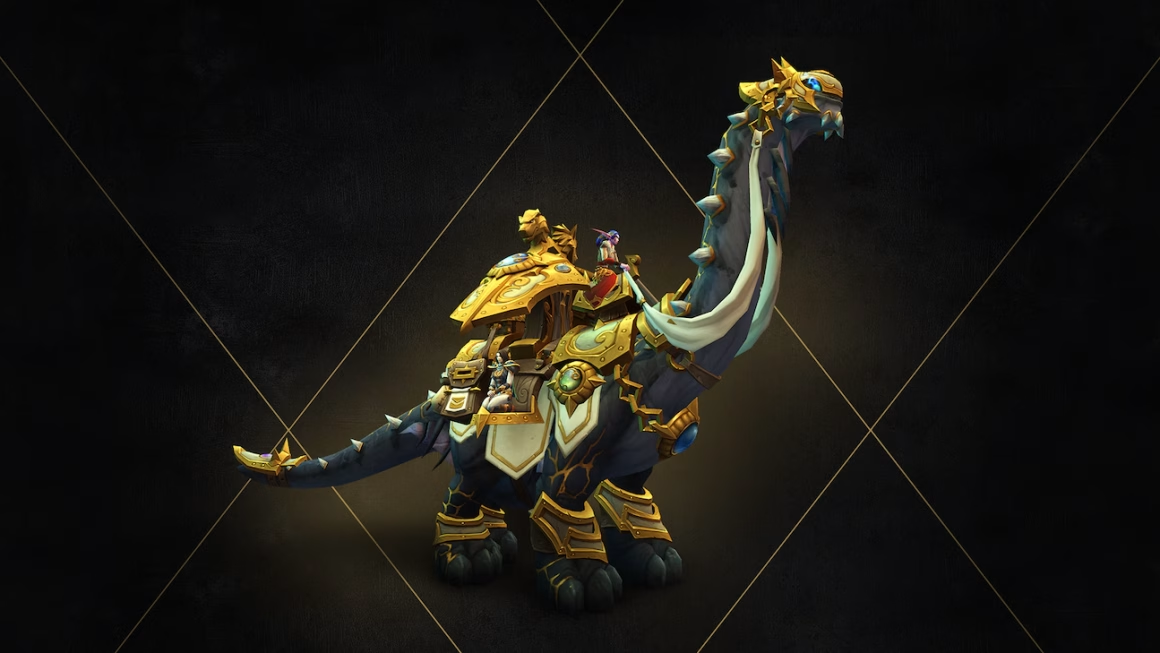What Are We Really Paying For?
When Blizzard the Trader’s Gilded Brutosaur, a mount that cost $90 in World of Warcraft, I thought it had to be a bundle. Surely it came with something extra. It didn’t. It was a single mount. Players could use WoW Tokens to purchase it – which would be approximately $120 of tokens at the time.
Yet Blizzard allegedly made around $15–17 million from that mount. That’s not a coincidence. It’s proof of a system designed to distance players from the real value of money.
So, the question becomes: why are companies still using virtual currencies when people are clearly willing to pay in plain dollars?
The Illusion of Virtual Currency
Virtual currencies exist for one main reason: to blur the connection between real money and digital spending.
When you buy 200,000 tokens for $20, the amount spent stops feeling real for many people. Psychologists call this money illusion: the tendency to treat abstract values differently from tangible cash. Once the brain no longer recognizes that tokens equal dollars, it becomes easier to spend more than intended.
Companies also structure bundles so you never buy the exact amount you need. You’re left with an odd balance, 200 coins, 50 gems, 100 Riot Points, just enough to push you toward another purchase. It’s a subtle manipulation that keeps you coming back.
They call it engagement. I call it engineered overspending.
The Legal Loophole
Legally, the system serves another purpose: avoiding gambling laws.
If a player spends real money for a chance to win an item, that’s gambling. If the player first converts money into virtual currency, and then uses that to buy a loot box? Suddenly, it’s not “real money” anymore.At least in the eyes of the law.
That loophole is why many countries have struggled to regulate loot boxes. The transaction technically involves play money, not cash. Even though the consumer did pay real money, the legal definition often depends on whether winnings can be “cashed out.”
It’s a neat trick of language. One that benefits companies, not consumers.
The $90 Mount That Proved the Point
When I first saw Blizzard’s $90 mount, I was stunned. The game already costs a subscription and the box price of the game plus expansions. Yet here was a digital item priced higher than many full games.
What surprised me most wasn’t the price. It was how many people had it.
Friends who couldn’t afford it still bought it. Some put it on credit cards already carrying high balances, meaning they’re now paying interest on a mount in a video game they don’t own. That’s the hidden cost no one talks about.
Blizzard didn’t need to disguise the purchase with WoW Tokens. People were ready to pay anyway. The Trader’s Gilded Brutosaur proves that virtual currency isn’t necessary for profit. It’s just another layer of obfuscation.
Why the System Persists
When questioned, companies usually say virtual currencies exist for “player convenience” or “cross-title consistency.” In practice, it’s about behavioral control.
If you see “200,000 tokens,” it doesn’t feel like you’re spending $20. If you already have tokens in your account, you’re more likely to use them. The longer that currency sits there, the less likely you are to view it as money. The more likely you are to spend it freely.
You’re being conditioned.
If You Don’t Know What You’re Buying, It’s Gambling
Let’s be blunt. If a player pays money without knowing exactly what they’ll receive, that’s gambling.
The receipt should list the item a person purchased, not just “loot box.” But companies can’t do that because the item is unknown until the box is opened. The randomness is what keeps people spending, hoping for better odds next time.
Changing the law to reflect that reality is long overdue. The definition of gambling shouldn’t depend on whether a company uses real money or fake currency. It should depend on knowledge and outcome.
If a consumer pays money and doesn’t know what they’re getting, it’s gambling. Full stop.
Stop Hiding the Price
Players have already proven they’ll spend real money on digital items. They don’t need to be tricked.
Blizzard’s $90 mount proved that. People didn’t flinch. They didn’t hesitate. They saw something they wanted and paid for it. That should have been a wake-up call for every company still using digital tokens as camouflage.
Virtual currencies protects profits, not players.
Companies don’t need them to succeed. They use them to obscure, to delay the moment of recognition between what you’re buying and what you’re spending. But that illusion only works until someone stops and asks:
Virtual currencies are designed to create distance between the player and their money. Between transparency and control. The truth is simple: companies don’t need to hide behind digital currencies to make a profit. People will pay anyway.
The only thing virtual currencies accomplish is making players forget what their purchases are really worth.






